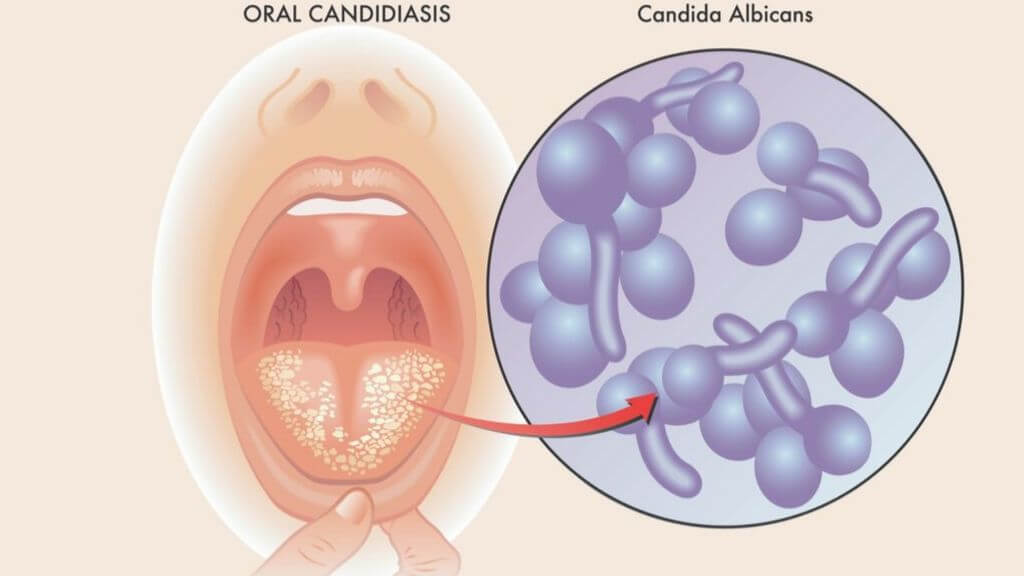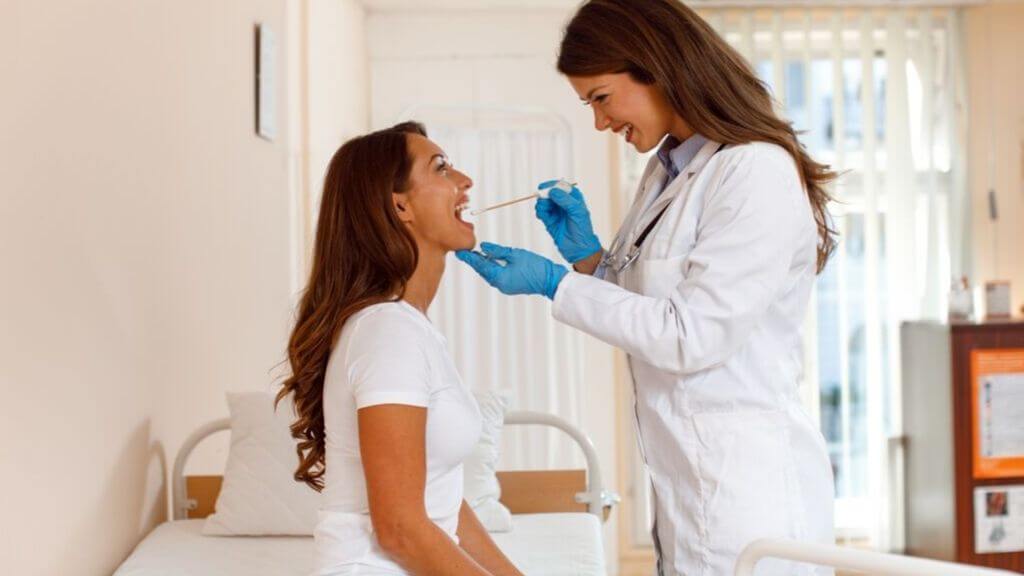Oral thrush is a yeast infection in your mouth, also known as oral candidiasis. It is most common among infants and young children but can occur in adults too.
The infection is caused by an overgrowth of the yeast Candida, and it is mild in most cases, but can be severe at times. Individuals with weakened immune systems are more at risk for oral thrush, and when your immune system cannot fight off the infection, it can spread to other parts of the body too.
Oral Thrush Causes
There is a small amount of the yeast Candida living in your mouth, and this is normal. A healthy immune system works to keep this yeast under control through the work of beneficial bacteria.
If the balance of microorganisms in your body changes, or if your immune system becomes compromised, Candida can grow and spread. Certain factors known to contribute to the overgrowth of Candida and oral thrush include:
The use of antibiotics, which kill off beneficial bacteria
Cancer treatments, which kill healthy cells making you more susceptible to infections
Conditions like HIV and leukemia, which weaken your immune system
Diabetes causes high blood sugar levels, which feed Candida and weakens your immune system, allowing for overgrowth.

Oral Thrush Symptoms
There are not always symptoms of oral thrush in the early stages, but as the infection progresses, the following symptoms can appear.
♦ White or yellow patches on the tongue, tonsils, gums, and inner cheeks
♦ Soreness or burning in the mouth
♦ Difficulty swallowing
♦ A bad taste in your mouth
♦ Loss of taste
♦ Dry mouth
♦ Slight bleeding if the bumps or patches are scraped
Oral Thrush Diagnosis: Examination of your mouth can allow doctors to diagnose oral thrush, so long as the characteristic bumps are present. Biopsies can be done to confirm the diagnosis.
If your doctor thinks that your esophagus has become infected, they will perform an endoscopy to look at the lining of your esophagus. They may also take a swab of the esophageal lining, to test the tissues for Candida overgrowth.
Treatment of Oral Thrush
Medications are the most common treatment prescribed for oral thrush. Common medications prescribed include:
♦ Antifungal medications such as fluconazole
♦ Antifungal lozenges
♦ Antifungal mouthwash such as nystatin
♦ Amphotericin B, which is prescribed in severe cases of infection

With treatment, oral thrush will typically go away within a couple of weeks, depending on the strength of your immune system. In cases where the infection is recurrent with no known cause, you need to undergo an evaluation to identify the underlying cause so you can get the appropriate treatment.
Oral Thrush Diet
Probiotics foods are the best option for supporting the beneficial bacteria in your gut. When these microorganisms are in balance, they are better able to keep Candida under control.
Probiotic foods include yogurt and other fermented products such as sauerkraut, kimchi, and kombucha. You can also take probiotic supplements. It is important to take probiotic supplements at regular doses, so you do not kill off the Candida too quickly. This results in yeast toxins flooding the bloodstream, which can be dangerous.
A low-sugar diet is also helpful for preventing Candida overgrowth. Sugars are known to feed these organisms, giving them fuel to grow and spread. Make sure you check labels carefully for hidden sugars, and also cut down on refined carbohydrates.

Cutting back on sugar allows your beneficial bacteria to flourish so they can control yeasts like Candida, and also keeps the yeast from feeding as you treat oral thrush.
Natural Treatments for Oral Thrush
In addition to medications, there are lifestyle changes you can make to help treat oral thrush, and prevent it from coming back.
During the recovery stage, it is important that you practice good oral hygiene by brushing your teeth softly so as not to scrape bumps, and replace your toothbrush after your treatment is complete. You also want to avoid mouthwashes except for those prescribed by your doctor. Don’t forget to clean any dentures or braces thoroughly.
The following natural mouth rinses have been proven to help keep your mouth clean, and when used daily can reduce the risk of oral thrush or can prevent it from coming back.
♦ Saltwater
♦ Water and baking soda solution
♦ Water and lemon juice solution
♦ Water and apple cider vinegar solution
Oral Thrush Statistics
♦ Between 5 to 7 percent of infants develop oral thrush.
♦ Oral thrush is prevalent in AIDS patients, estimated at 9 to 31 percent of patients.
♦ Oral thrush is prevalent in close to 20 percent of cancer patients.

Oral Thrush and Children
It is very common for infants to have several episodes of oral thrush during their first year of life. The fungus is easily contracted from the mother during pregnancy, delivery, and breastfeeding.
The yeast can also be present naturally in the child’s environment, and with their immune systems not being fully developed, the infection is easy to contract. The symptoms in babies are similar to those in adults, and can also cause difficulty feeding and excessive fussiness.
What Is the Long-Term Outlook?
Most cases of oral thrush are mild, but in severe cases, oral thrush can spread to your esophagus, causing more severe complications.
Those with weaker immune systems are more likely to develop complications as thrush can spread to the brain, heart, and eyes easier. This is known as systemic candidiasis, and it can damage organs and cause septic shock, which is life-threatening.
Seeking treatment as soon as you suspect oral thrush is the best way to prevent a more serious outcome.






